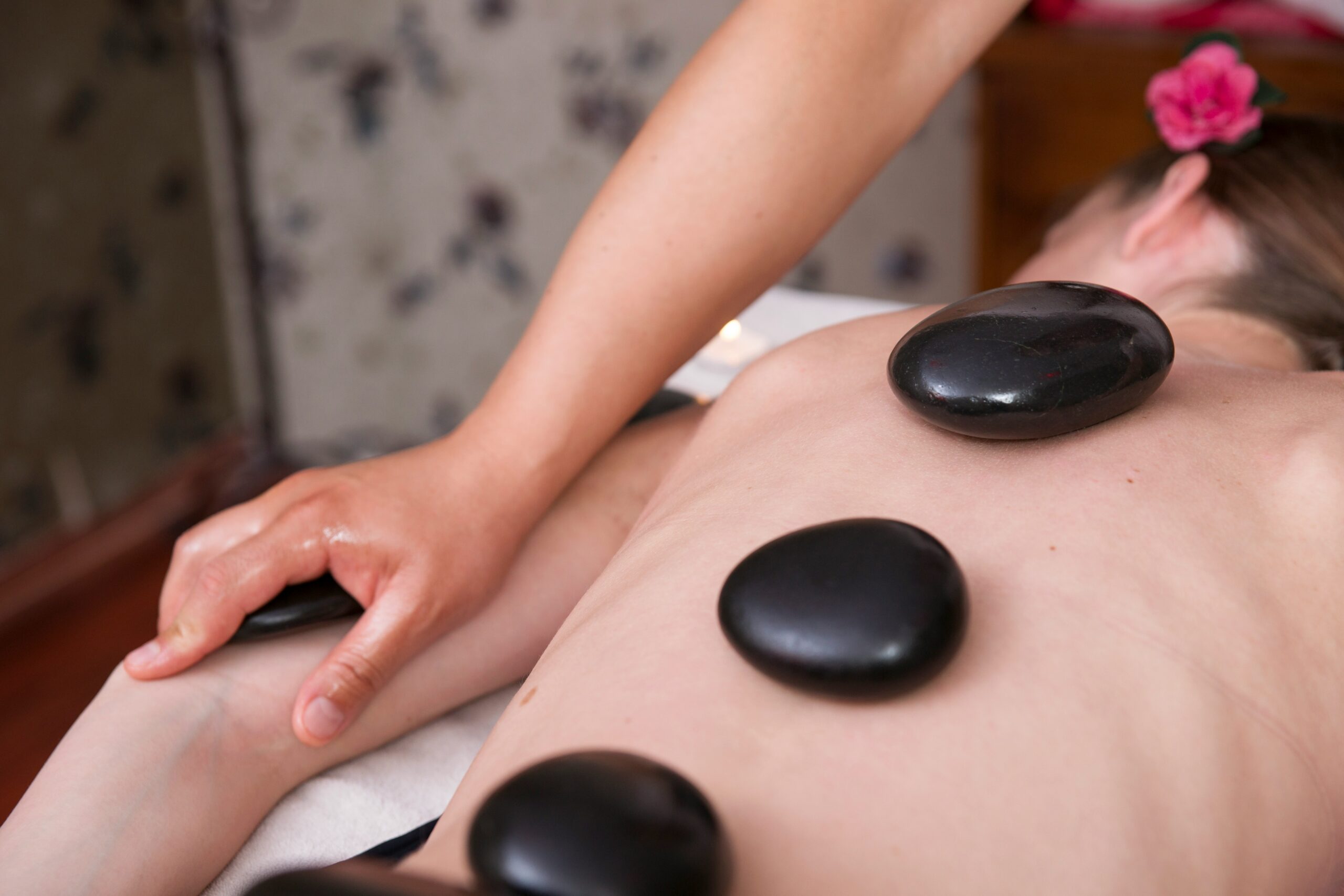What is CCTV Installation?
Closed Circuit Television, or CCTV, has become a household name in security and surveillance. You might have noticed these cameras peeking from the corners of buildings, watching over homes, businesses, and public areas alike. So, what exactly is CCTV installation? At its core, CCTV installation involves setting up a system of cameras connected to a closed network to monitor specific areas for security purposes. This process doesn’t just entail merely nailing a few cameras to the wall and calling it a day. Professional installation involves meticulous planning, designing, and executing a system tailored to the specific needs of the client. From residential homes to sprawling corporate campuses, each installation can vary significantly. Hence, having a comprehensive understanding of how professional engineering services ensure seamless CCTV installation is not just beneficial—it’s essential. The beauty of modern CCTV technology lies in its adaptability. Whether you’re aiming to deter petty theft, monitor employee behavior, or keep an eye on traffic flow, a professional installation team can tailor your security system to meet your demands. It’s an art and a science combined—a delicate balance of choosing the right equipment and positioning them in the right spots. So, let’s dig into what makes CCTV installation such a critical process and why taking the professional route can make all the difference.
The Importance of CCTV Systems
Enhanced Security
First and foremost, the primary goal of any CCTV system is security. In today’s world, with crime rates fluctuating and unrest becoming an increasingly common news headline, ensuring safety has never been more critical. CCTV cameras act as a deterrent for malicious activities and provide vital evidence in case of incidents.
Monitoring and Surveillance
CCTV systems don’t just provide a passive security measure; they’ve also evolved into effective monitoring tools. Businesses can use them to supervise employee performance, while homeowners can keep tabs on their kids when they play outside. The ability to access live footage remotely has made these systems even more versatile.
Data Collection and Analysis
In addition to real-time surveillance, CCTV systems can gather data that companies can analyze for various purposes, from customer behavior in a retail setting to traffic patterns in a parking lot. Such insights can help in making informed business decisions and improving service quality.
Insurance Benefits
Many insurance providers look favorably upon businesses and homes equipped with security systems like CCTV. Having a professional CCTV setup can lower premiums or even provide discounts, which is a win-win for everyone involved!
Peace of Mind
At the end of the day, knowing your property is being monitored gives a sense of security that’s hard to quantify. Amateur setups simply can’t match the level of reliability and peace of mind that professional installations deliver.
Why Choose Professional Engineering Services?
Choosing professional engineering services for CCTV installation may seem like an obvious choice, but many tend to overlook the intricacies involved. Let’s dive into several compelling reasons why going with professionals is your best bet.
Expertise and Experience
When you hire professional engineers, you’re not just paying for installation—you’re investing in their expertise. These professionals have undergone training and have considerable real-world experience, enabling them to provide insights and solutions that a novice simply wouldn’t think of. They know the industry standards, local compliance regulations, and best practices.
Customization
Every family and business has unique security needs. Professional services can evaluate these specific requirements and customize the system accordingly. This kind of tailored solution includes selecting appropriate camera types, angles, and associated technologies (like motion sensors) that best meet your needs.
Efficient Installation
Let’s face it: time is money. Professional engineers know how to adhere to a timeline without cutting corners. Their efficiency ensures that minimal disruptions occur during installation, allowing you to get back to your day-to-day activities sooner rather than later.
Support and Maintenance
Even the best systems need some TLC. Opting for professional services often includes ongoing support and maintenance. This support can range from regular check-ups to troubleshooting issues when something goes south.
Legal Compliance
Understanding local laws and regulations is crucial in the realm of surveillance. Engineering professionals are well-versed in legalities related to CCTV installation, ensuring you’re not inadvertently breaching privacy laws or other regulations.
Enhanced Technology Integration
Modern CCTV systems often require integration with various technologies—like smart home systems or alarm systems. Engineering services come equipped to handle these integrations, ensuring that all components of your security architecture work together seamlessly.
Key Stages of CCTV Installation with Professional Engineers
Let’s discuss the various stages of CCTV installation managed by professional engineers. Knowing these stages is pivotal in understanding how meticulously this process unfolds.
1. Site Assessment
The first order of business in any CCTV installation is a thorough site assessment. This involves examining the location where the cameras will be installed and considering factors such as lighting conditions, traffic flow, and the areas that require monitoring. Engineers will take detailed notes, look for blind spots, and create a list of potential camera locations, ensuring maximum coverage.
2. System Design
Once the site assessment is complete, the next step is system design. Professional engineers create a tailored CCTV system based on the initial assessment. This stage often results in detailed schematics and layout plans, ensuring each camera’s angle is optimized to capture crucial footage without any obstructions.
3. Equipment Selection
After crafting a design, selecting the right equipment is crucial. Experienced professionals understand various types of cameras, recording devices, and other necessary components. They weigh factors like resolution, night vision capability, and weather resistance to recommend and procure the best gear for your needs.
4. Installation
Installation marks the beginning of the physical process. Engineers will mount cameras, run cables, and connect all the components according to the designed layout. This step may involve messy wiring—rest assured that professional teams handle it with care for a clean look that remains functional.
5. Configuration and Integration
Once the installation is complete, the setup needs configuration. This step involves programming the cameras, setting motion detection zones, and integrating with other security systems. Proper configuration maximizes the system’s potential, ensuring effective monitoring.
6. Testing
After everything has been configured, testing is essential. Engineers will run through a checklist to ensure every camera is operational, clear, and capturing the intended areas. They’ll look out for any glitches, adjusting as necessary to meet standards.
7. Training and Handover
Finally, it’s time for the handover. Professional engineers will provide training for you or any designated personnel on how to operate the system, access footage, and troubleshoot minor issues. You’ll leave with a tangible understanding of your new security setup, allowing you to use it effectively.
Common Challenges in CCTV Installation
While CCTV installation is crucial, it’s not devoid of challenges. Below are a few common hurdles faced by both professionals and DIY installers alike:
Inaccessibility or Constraining Architecture
Older buildings or spaces with complex architectures may prove difficult for optimal camera placement. Striking a balance between effective surveillance and aesthetic integrity can be tricky!
Environmental Factors
Outdoor cameras must endure harsh weather, fluctuating temperatures, and even vandalism. Professionals have ways to safeguard equipment, but those hurdles can play a role in the installation process.
Cost Constraints
Budget is always a factor in any installation. Some might think they can compromise on quality to save costs, but doing so may have a long-term negative impact on system efficacy.
Technical Difficulties
We’ll be honest—technology isn’t foolproof. Sometimes, you might run into configuration issues, compatibility problems, or connectivity glitches that can stall a smoothly operating installation.
Compliance Issues
Navigating the local laws regarding surveillance—especially in terms of privacy—can be a challenging path. It’s crucial to understand what the rules say to avoid any legal complications.
Training Challenges
Even after installation, ensuring everyone is trained effectively on how to use the system can be a challenge, especially in large organizations where personnel turnover is high.
The Role of Engineering Services in Overcoming Installation Challenges
It’s easy to feel overwhelmed by the challenges listed above. That’s where professional engineering services come into play, helping to confront these issues head-on.
Thorough Site Analysis
First things first, experienced professionals conduct an in-depth site analysis. They know precisely what to look for and take every variable into account, enabling them to design a CCTV system that circumvents potential obstacles before they arise.
Versatile Equipment Options
Because professional services have access to various types of cameras and technology, they can recommend equipment that adapts to environmental challenges. Weatherproof cameras, for instance, can safeguard against harsh conditions.
Cost-Effective Solutions
While some may worry about upfront costs, professionals can help devise plans that make the most out of your budget without sacrificing quality. They can create a staged rollout plan to spread costs over time if need be.
Technical Prowess
When technical issues arise (and they will), trained professionals possess the know-how to resolve problems efficiently. Whether it’s recalibrating a camera or helping you troubleshoot poor connectivity, they’re equipped to tackle these challenges head-on.
Legal Expertise
Having seasoned engineers means you’ll have someone who’s familiar with the laws in your area. They’ll ace paperwork, inform you of necessary permits, and keep you compliant, curating a seamless installation without legal worries.
Comprehensive Training
Proper training doesn’t just stop the day of installation. Professional services often provide ongoing training sessions to ensure staff members are equipped to utilize the system fully, adapting to new personnel seamlessly.
CCTV Systems vs. DIY Installation: Pros and Cons
Sounds tempting, doesn’t it? A DIY approach might save you some cash, but before you roll up those sleeves, let’s weigh the pros and cons.
Pros of DIY Installation
- Lower Costs: The most significant lure is the opportunity to save money. You’re not paying for professional services or their markups on equipment.
- Convenience: You can choose your own time and pace without coordinating with an installation team.
- Learning Experience: For the DIY enthusiasts, this could be a great learning opportunity. You might even pick up some useful skills!
Cons of DIY Installation
- Lack of Expertise: You might not know what equipment to buy or how to configure it for optimal performance. It could lead to ineffective surveillance.
- Time-Consuming: While initially appealing, the DIY path can take much longer than expected, especially while troubleshooting issues.
- Potential Warranty Loss: Oftentimes, DIY installations can void warranties on equipment if not done correctly or if it doesn’t meet manufacturer standards.
- Legal Compliance Risks: Navigating privacy laws without professional guidance can lead to legal repercussions.
Pros of Professional Installation
- Expert Troubleshooting: Trained professionals can swiftly tackle complications, ensuring the system works optimally.
- Customized Solutions: Professionals provide tailored systems that fit your specific needs after thorough assessments.
- Time-Saving: Leave it to the experts—less disruption for you and swift, efficient installation.
Cons of Professional Installation
- Higher Upfront Costs: The initial expense can be higher than a DIY installation, which is a significant consideration for budget-conscious individuals.
- Scheduling Conflicts: Coordinating with an external team may introduce timing challenges into your plans.
- Dependent on External Teams: Over-reliance on hired experts may lead to delays for any post-installation adjustments needed down the road. As you can see, while DIY installation may seem appealing, the complexities and potential pitfalls make a professional approach the most prudent, especially when you’re concerned about security.
How Advanced Technology Impacts CCTV Installation
We can’t discuss CCTV systems without touching on how technology drives innovation in this space. So, let’s dive into some of the advanced tech that enhances CCTV installation.
High-Definition Cameras
Gone are the days of grainy footage! HD cameras offer remarkable clarity and detail—critical for identifying individuals and activities in recorded footage.
Smart Features
Smart camera technologies have made their mark—from motion detection to facial recognition and even AI-powered analytics. These features optimize surveillance capabilities, enabling detection of irregular behavior.
Wireless Connectivity
Wireless options have simplified installation considerably. Engineers no longer need to fuss with cumbersome cabling, greatly reducing physical barriers. This approach increases aesthetic viability while maintaining functionality.
Cloud Storage
Storing recorded footage on the cloud eliminates the need for physical hard drives on-site and increases access flexibility. It ensures your valuable data is stored securely, away from potential on-premise breaches.
Integration with Other Systems
Modern systems offer integration capabilities with intrusion detection systems, alarms, and access control, creating a cohesive security environment that extends well beyond just CCTV.
Remote Access
With mobile applications and web portals, you can monitor your security system anywhere in the world. This convenience brings peace of mind to users who may travel or manage multiple locations.
Future Trends in CCTV Installation
The landscape of CCTV installation is ever-evolving. With technology progressing faster than a speeding bullet, upcoming trends are worth examining. Here are some notable predictions:
AI and Machine Learning
As technology bends towards smarter surveillance, artificial intelligence and machine learning will enable cameras to learn from patterns and behaviors, providing alerts for behavior that deviates from the norm.
Enhanced Data Analytics
The convergence of CCTV footage and big data analytics will allow businesses to capitalize on insights gleaned from data trends—offering opportunities for optimizing operations.
5G Connectivity
With 5G internet rolling out, video streaming will become faster and more reliable, which will enhance the performance of cloud-based surveillance systems significantly.
Sustainability
Green technology is gaining traction, and CCTV installations aren’t going to be left behind. Energy-efficient cameras and power sources, like solar panels, are likely to become prevalent in the coming years.
Integration with IoT
The integration of CCTV systems with the Internet of Things (IoT) will create interconnected ecosystems capable of responsive and actionable insights, enhancing both security and data management capabilities.
Cost Considerations for Professional Installation Services
When contemplating a professional installation, understanding the cost structure can make all the difference. Generally, costs tend to vary based on various factors, including:
Equipment Quality
The type of cameras and system selected significantly impacts overall costs. High-quality equipment tends to have a higher upfront investment but often pays off in durability and performance.
System Complexity
A basic setup with only a few cameras will naturally cost less than a more intricate installation that integrates multiple components and advanced technology. The intricacy of the wiring and associated hardware also factor in here.
Labor Costs
Labor varies widely depending on the location and the experience level of the professionals you hire. More experienced teams may charge higher hourly rates, but they often translate those costs into value through efficiency and fewer mistakes.
Ongoing Maintenance
Keep in mind recurring expenses, such as maintenance agreements and potential upgrades down the line. This is often overlooked but can significantly affect your budget.
Additional Features
As we discussed earlier, smart technology features might come at a cost, but they often provide a more significant return through enhanced performance. Be sure to weigh these options carefully.
Maintenance and Support After Installation
Once your CCTV installation is complete, maintenance becomes a priority. Regular upkeep ensures everything runs like a well-oiled machine. Let’s dive into some crucial aspects of ongoing maintenance and support.
Routine Inspections
Professional services often include routine checks, ensuring cameras remain operational, covered, and protected from any obstructions. They’ll look for signs of wear or potential performance issues, allowing for timely interventions.







